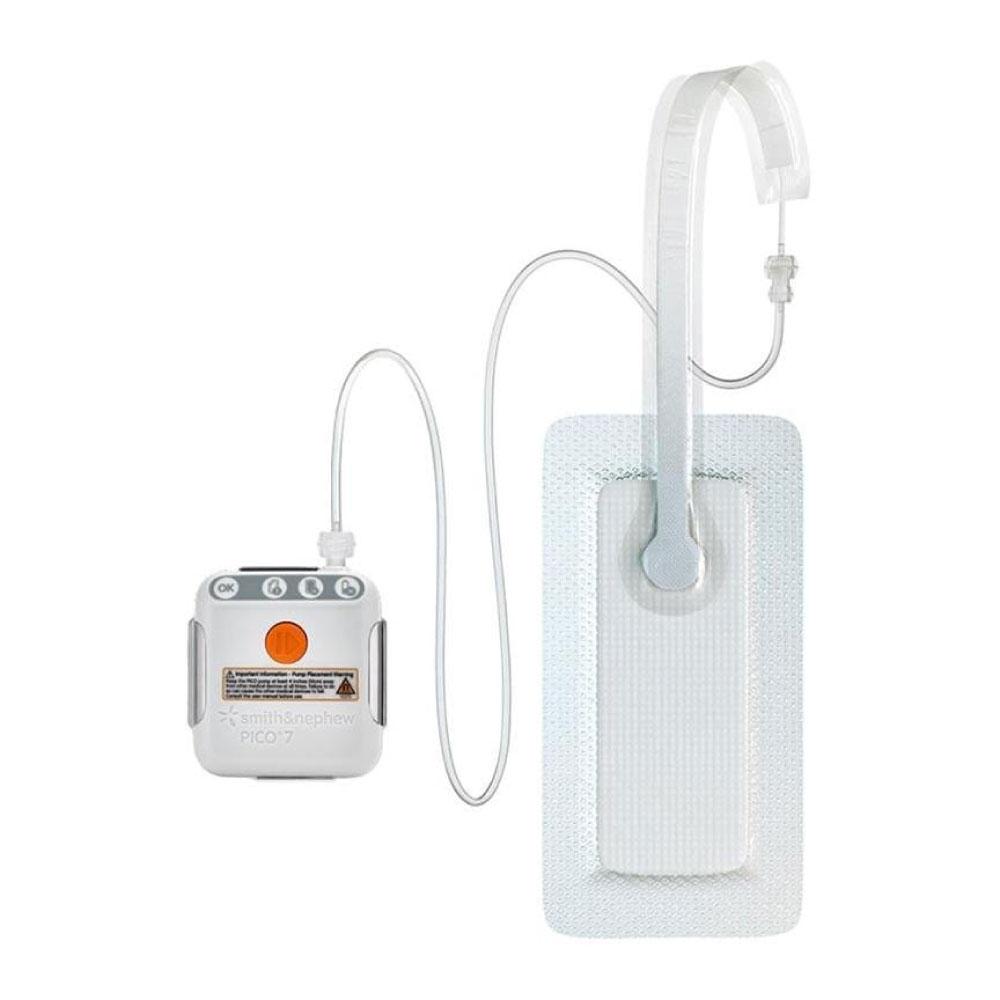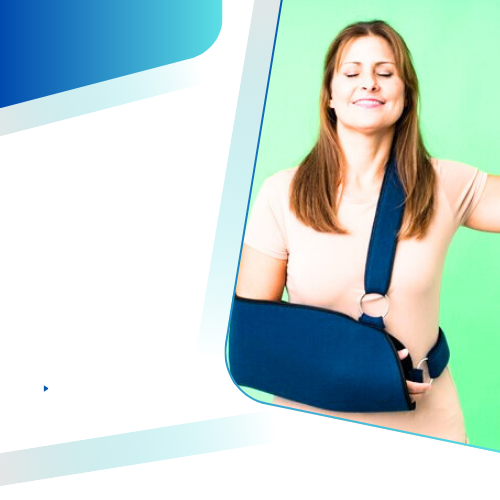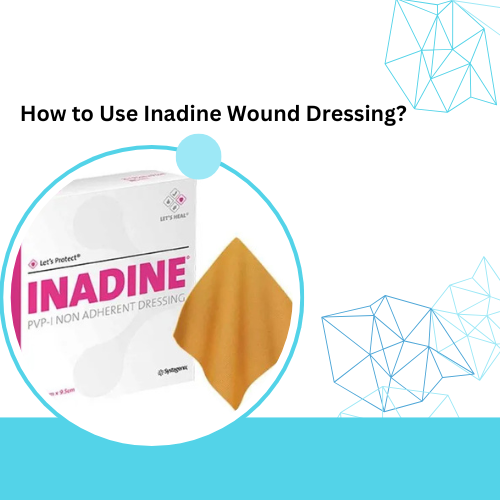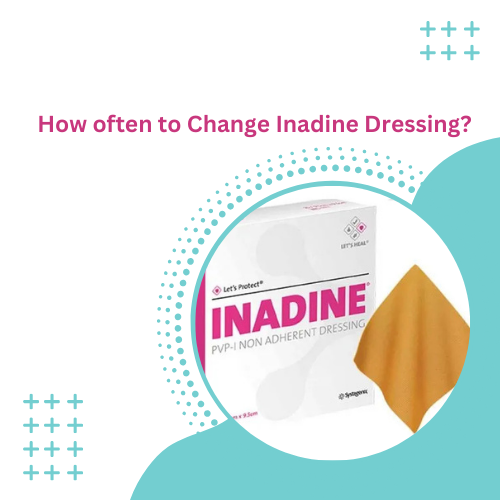What is a PICO Dressing?
-> Indications:
PICO dressings are suitable for various types of wounds, including:
- Surgical wounds
- Diabetic ulcers
- Pressure ulcers
- Traumatic wounds
-> Benefits:
- Enhanced Healing: The negative pressure can accelerate the healing process and reduce the risk of infection.
What is A PICO Dressing Used For?
A PICO dressing is used primarily for advanced wound care and is designed to promote healing through negative pressure wound therapy (NPWT). Here are the main uses:
Indications:
1. Surgical Wounds:
2. Pressure Ulcers:
3. Diabetic Foot Ulcers:
4. Traumatic Wounds:
5. Burns:
How Does A Pico Dressing Work?
A PICO dressing works by utilizing negative pressure wound therapy (NPWT) to promote healing through several mechanisms:
Mechanisms of Action:
1. Negative Pressure Application:
2. Fluid Management:
3. Tissue Stimulation:
4. Reduced Infection Risk:
5. Comfort and Mobility:
How To Apply A Pico Dressing?
Applying a PICO dressing involves several steps to ensure proper placement and effectiveness. Here’s a general guide:
### Materials Needed:
– PICO dressing kit (includes dressing, pump, and tubing)
– Scissors (if necessary)
– Clean gloves
– Sterile saline or wound cleanser (optional)
### Step-by-Step Application:
1. Prepare the Wound:
2. Wash Hands:
3. Open the PICO Dressing Kit:
– Remove the PICO dressing and pump from the packaging, being careful not to touch the inside of the dressing.
4. Apply the Dressing:
5. Seal the Edges:
This is crucial for maintaining negative pressure.
6. Attach the Pump:
– Connect the tubing from the dressing to the PICO pump. Ensure the connection is secure.
7. Activate the Pump:
– Turn on the pump. You should hear a soft whirring sound as it creates negative pressure.
– Check that the pressure indicator on the pump is functioning correctly.
8. Secure the Pump:
– Place the pump in a convenient location, using a belt or adhesive pad if needed, ensuring it doesn’t get tugged or pulled.
9. Monitor the Dressing:
– Check the dressing and pump regularly for proper function, leaks, or signs of infection.
Using a PICO dressing correctly can significantly enhance wound healing, so take your time and ensure all steps are followed accurately!
How To Change A PICO Dressing?
### Materials Needed:
– New PICO dressing kit
– Clean gloves
– Sterile saline or wound cleanser (optional)
– Scissors (if needed)
– Gauze (for cleaning)
### Step-by-Step Instructions:
1. Prepare the Environment:
– Wash your hands thoroughly and set up a clean workspace.
– Gather all necessary materials within reach.
2. Turn Off the Pump:
– Before removing the old dressing, turn off the PICO pump.
3. Remove the Old Dressing:
4. Inspect the Wound:
5. Apply the New Dressing:
– Open the new PICO dressing kit without touching the inside.
– Position the hydrocellular layer over the wound, ensuring complete coverage.
– If necessary, trim the dressing to fit, but it should extend beyond the wound edges.
6. Seal the Edges:
– Press down firmly on the adhesive edges to create a good seal, which is critical for maintaining negative pressure.
7. Connect the Pump:
– Attach the tubing from the new dressing to the PICO pump.
– Ensure the connection is secure.
8. Activate the Pump:
9. Secure the Pump:
– Place the pump in a convenient location and secure it with a belt or adhesive pad as needed.
10. Dispose of the Old Dressing:
– Dispose of the old dressing and any used materials according to local guidelines for medical waste.
11. Wash Hands Again:
– After the dressing change, wash your hands thoroughly to maintain hygiene.
How To Remove Pico Dressing?
### Materials Needed:
– Clean gloves
– Sterile saline or wound cleanser (optional)
– Scissors (if needed)
– Gauze (for cleaning)
### Step-by-Step Instructions:
1. Prepare Your Environment:
– Wash your hands thoroughly.
– Gather all necessary materials within reach in a clean area.
2. Turn Off the Pump:
– Turn off the PICO pump before starting to remove the dressing.
3. Put on Clean Gloves:
– Use clean gloves to maintain hygiene.
4. Loosen the Dressing:
5. Gently Remove the Dressing:
– If there’s resistance, apply more saline to help ease the dressing away.
6. Inspect the Wound:
7. Clean the Wound (if necessary):
8. Dispose of the Dressing:
– Safely dispose of the old dressing and any used materials according to local medical waste guidelines.
9. Wash Your Hands:
Where to Buy PICO Dressing?
You can purchase PICO dressings from Joya Medical Supplies in Australia, either through their website or by contacting them directly for availability and pricing. If you have specific needs or questions, reaching out to Joya Medical Supplies directly would be a good idea!




